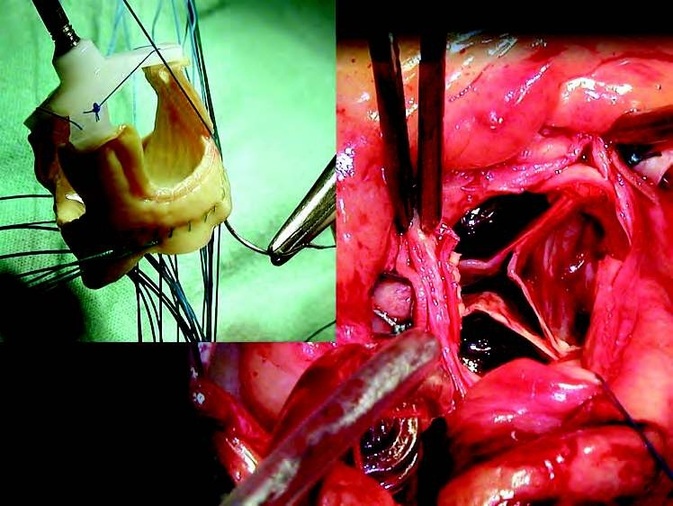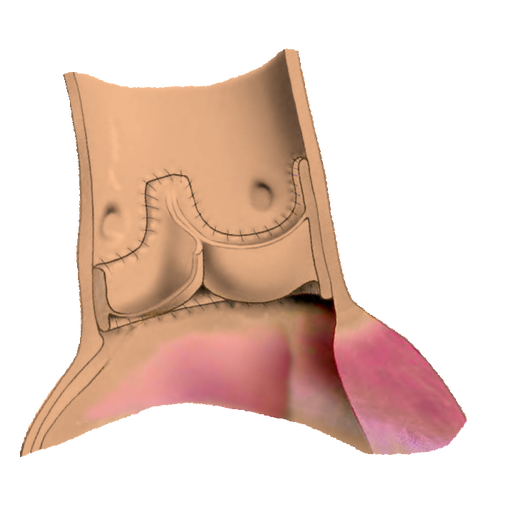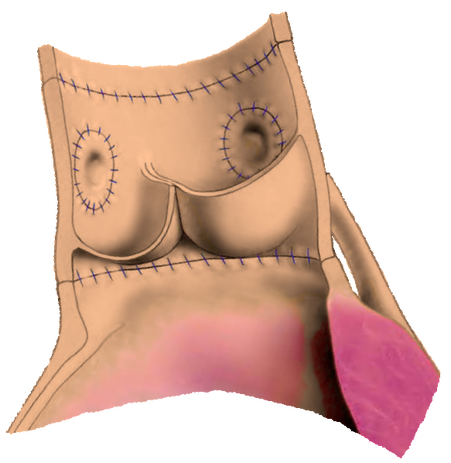AORTIC VALVE REPLACEMENT
RELATED PROCEDURES
STENTLESS BIOPROTHESIS
- Differs technically from the use of a mechanical valve or stented bioprosthesis.
- Does not have a stent or a sewing ring,.
- Its annulus is usually fixated into the recipient’s annulus with single or mattress stitches.
- After seating and tying the sutures, another suture line is performed to fixate the scalloped commissures.
- Technique of root replacement with reimplantation of the coronary ostia buttons.
- Freehand Technique: involving trimming the bioprosthesis for classic double-suture-line implantation.
Implantation of stentless bioprosthesis.
Inset shows placement of sutures into the annulus of bioprosthesis
Inset shows placement of sutures into the annulus of bioprosthesis
allografts
Techniques:
Freehand (sub-coronary)(Double suture line) technique:
- The allograft is pulled inside the recipient’s annulus, inverted into the left ventricle
- Then subsequently sutured with a continuous stitch to the recipient’s annulus.
- After completion of this first suture line, the allograft is reinverted back into the aorta
- Then the commissures are resuspended
- The second suture line is completed as described previously.
Freehand (sub-coronary)(Double suture line) technique:
- The allograft annulus is sutured into the recipient’s annulus.
- Then the commissures of the allograft are symmetrically pulled into the recipient’sroot by means of transaortic mattress stitches
- The second suture line is completed with a continuous stitch.
- The first (annular) suture line can also be completed with a continuous stitch:
- The allograft is pulled inside the recipient’s annulus, inverted into the left ventricle
- Then subsequently sutured with a continuous stitch to the recipient’s annulus.
- After completion of this first suture line, the allograft is reinverted back into the aorta
- Then the commissures are resuspended
- The second suture line is completed as described previously.
- This technique cannot be used if unsuitable morphology is present (asymmetric or dilated sinuses of Valsalva, dilated sinotubular junction, annulo-aortic ectasia) and root replacement is needed
- Has generally been preferred in recent years, and not only in cases where its choice is forced by unsuitable morphology of the patient’s aortic root
- Annulus implantation is identical to the First part of Freehand technique (isolated single sutures).
- Some recommend incorporating a Teflon felt stripe into the suture to prevent further annular dilation and to achieve better hemostasis.
- Subsequently, the buttons with coronary ostia are implanted into the allograft with a continuous mono filamentous stitch.
- The final step is the distal anastomosis of the allograft to the distal part of the ascending aorta.
Subcoronary freehand implantation of allograft into aortic position
Allograft implantation by technique of root replacement


